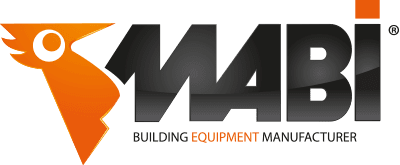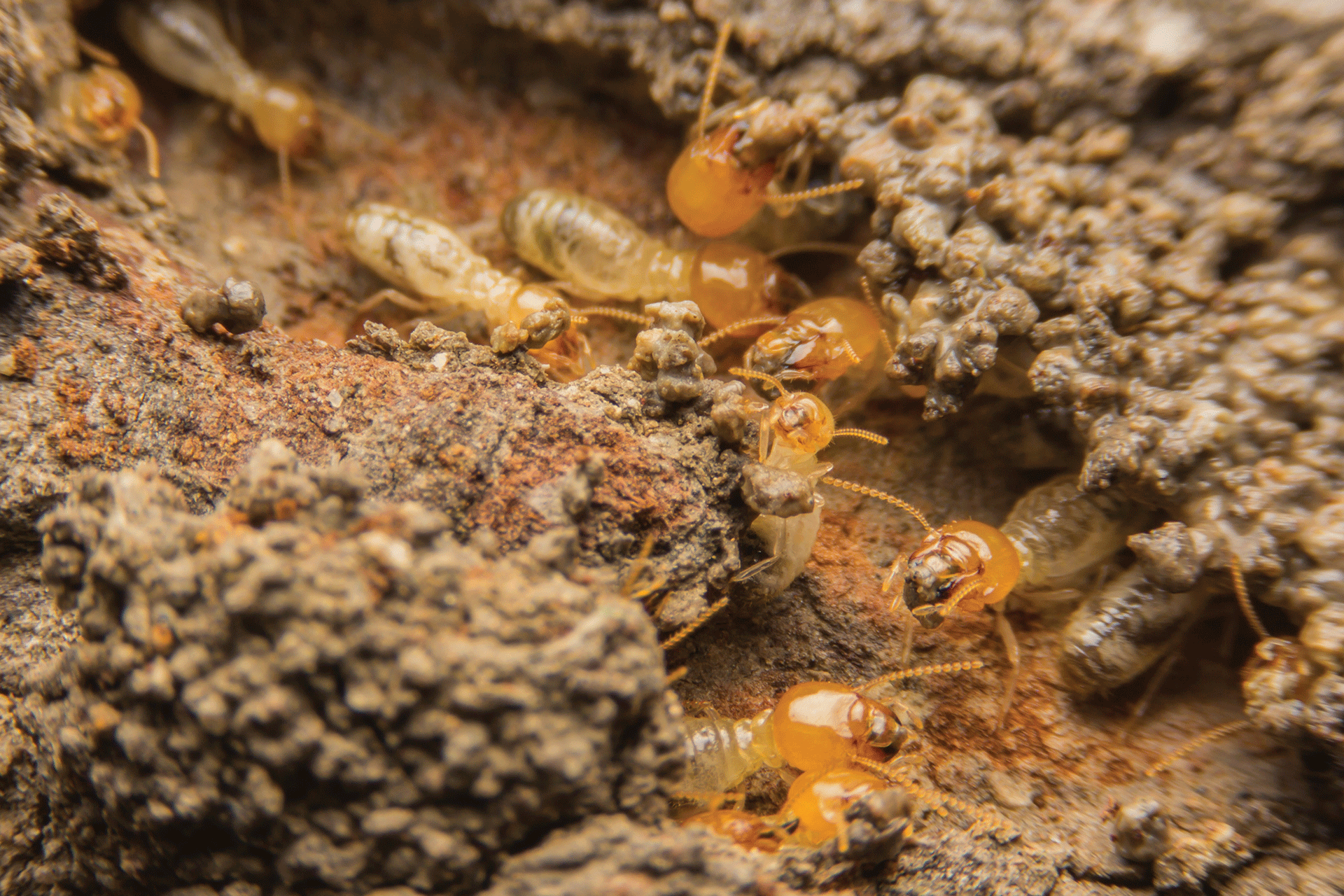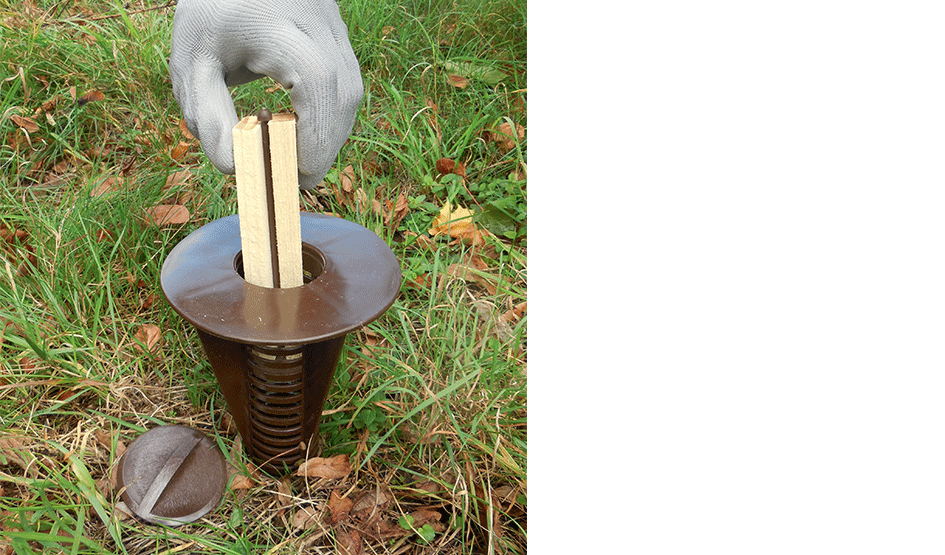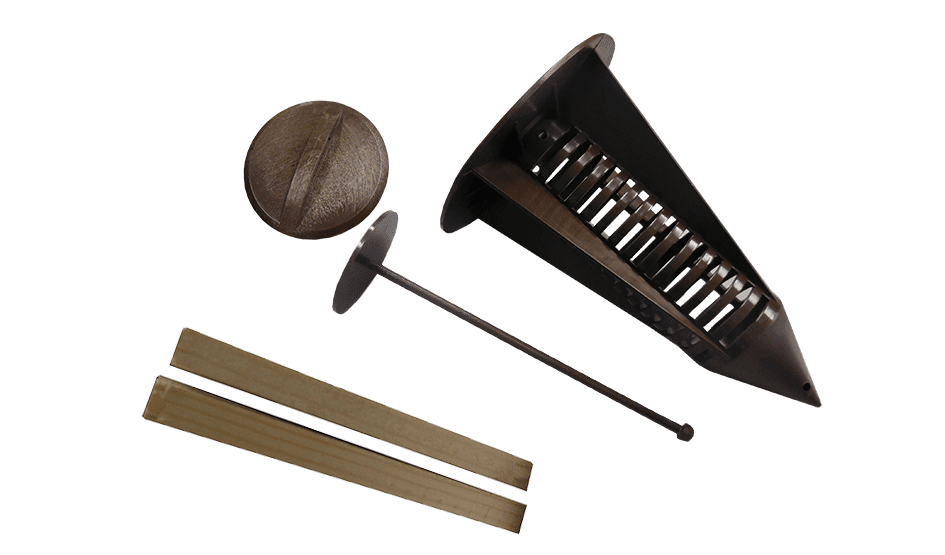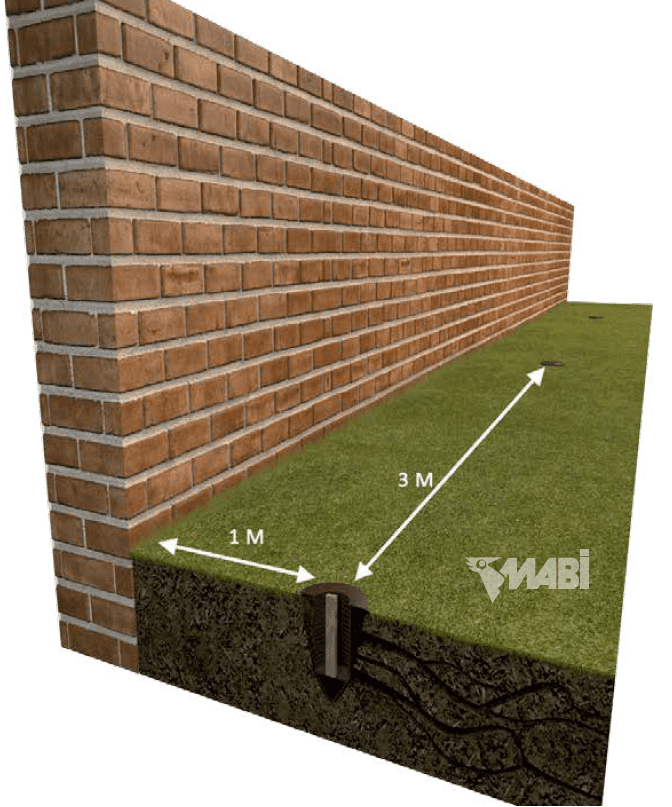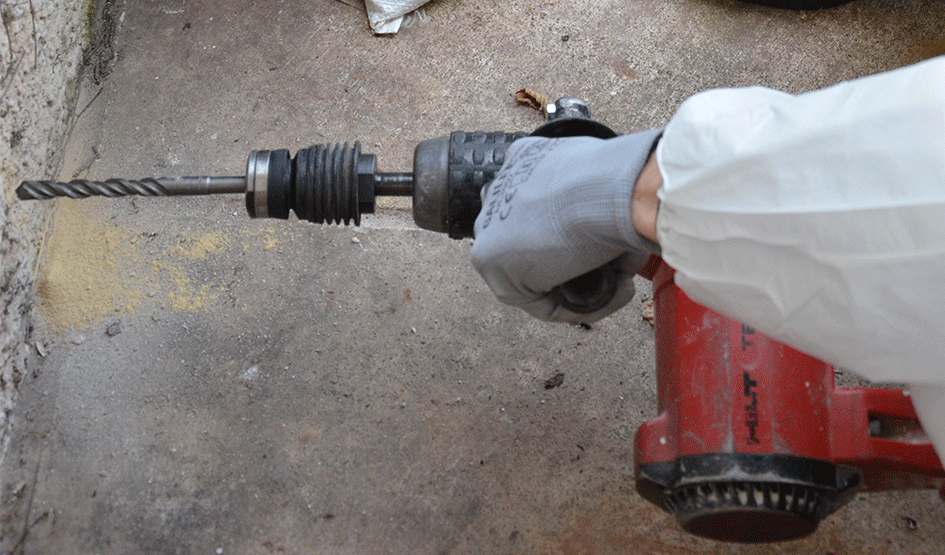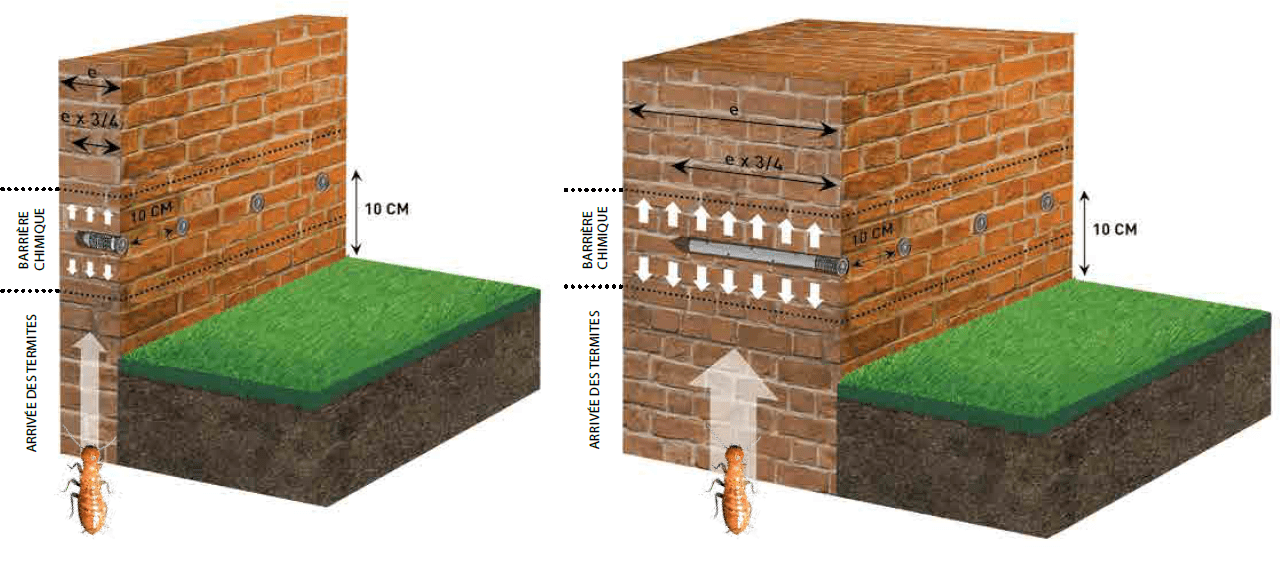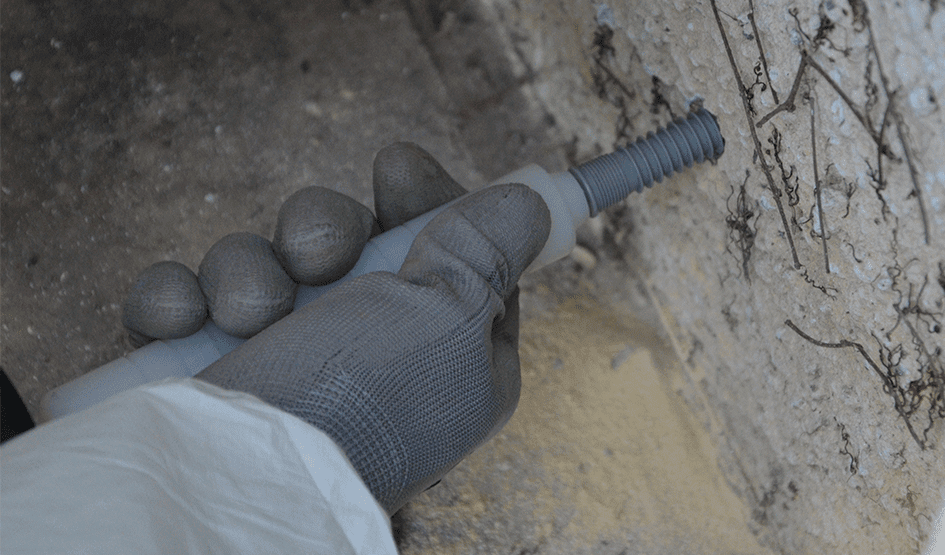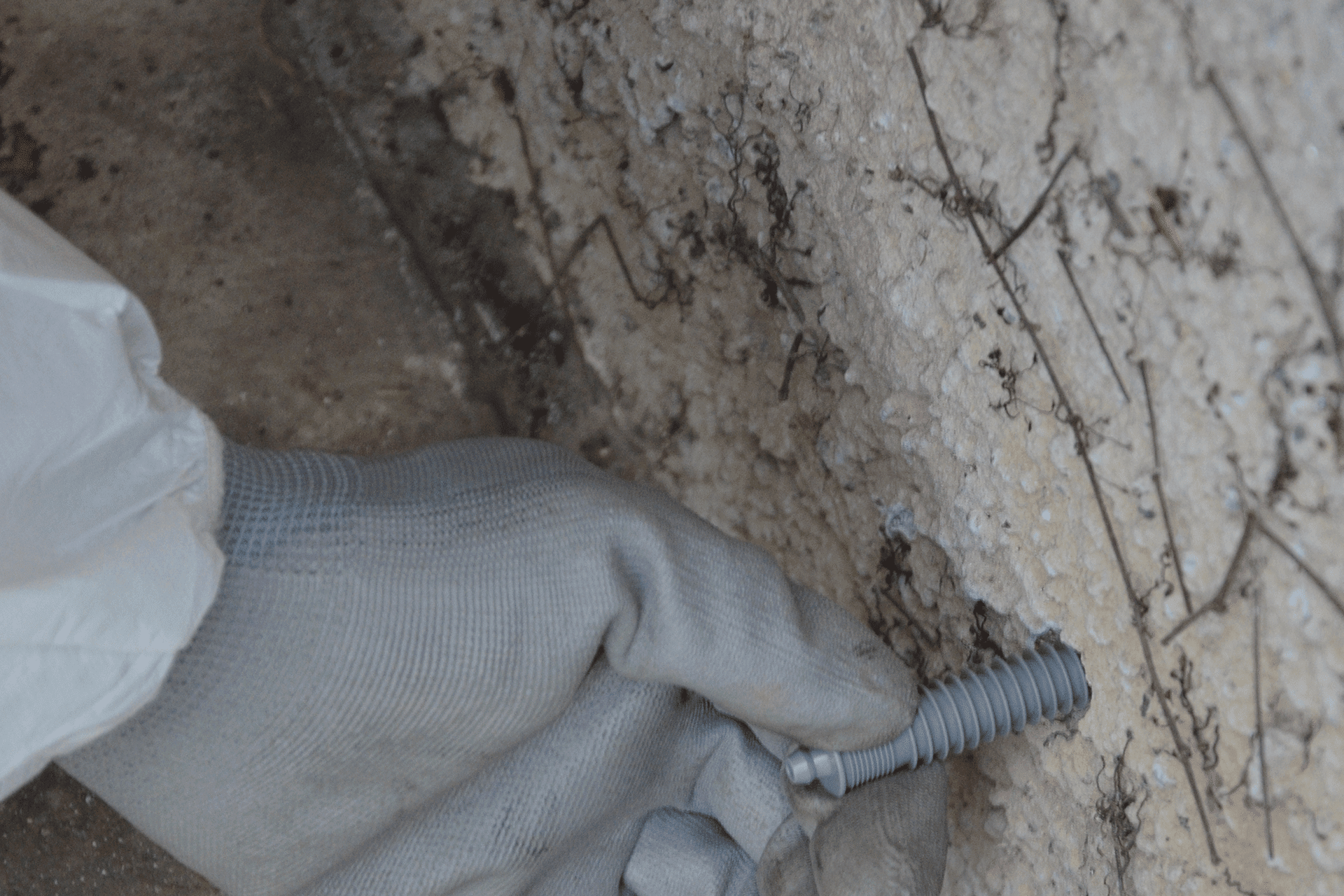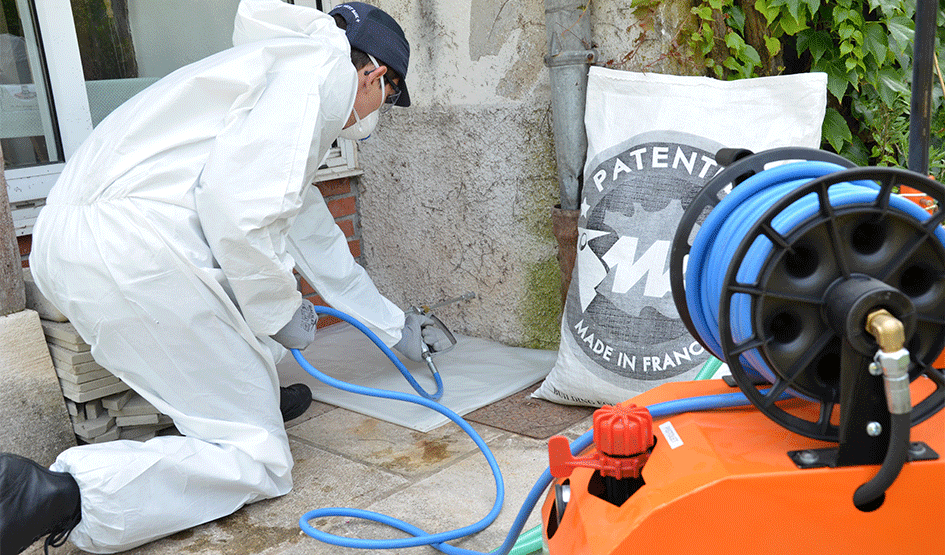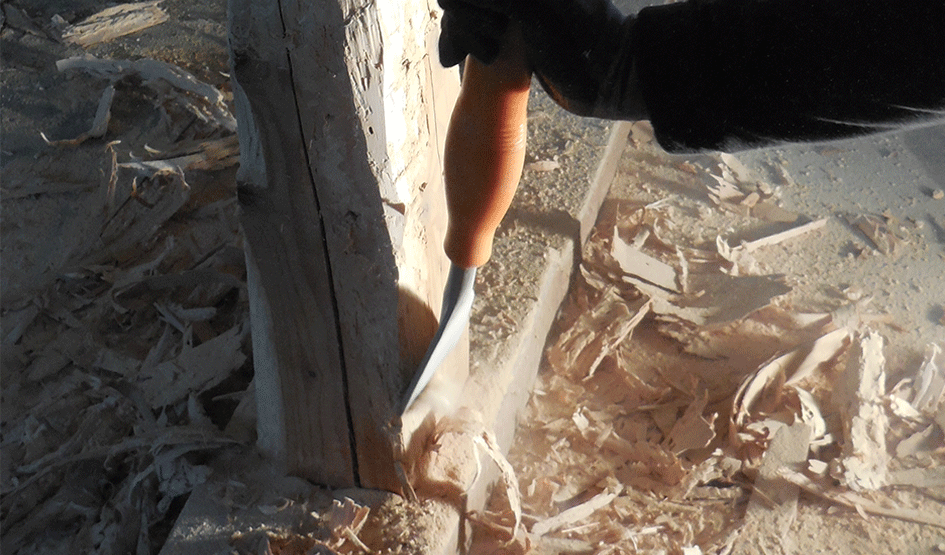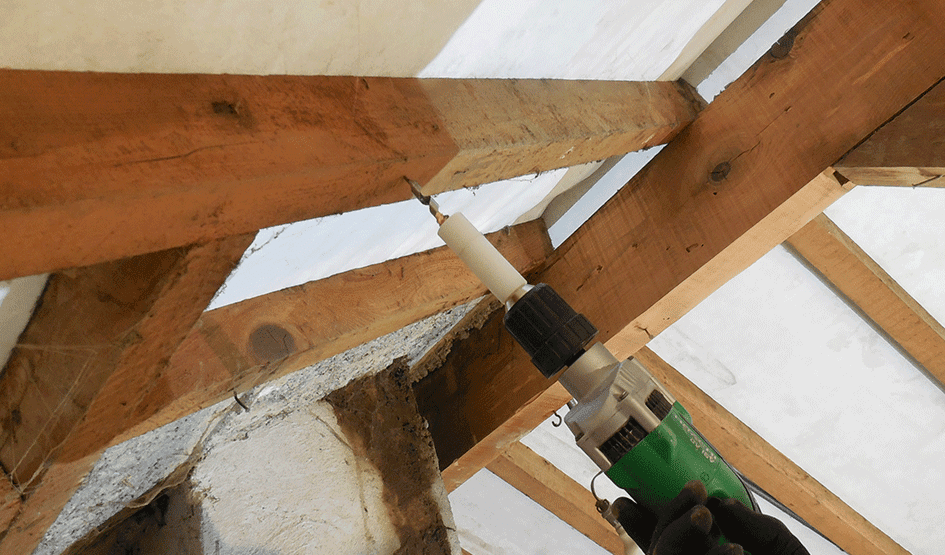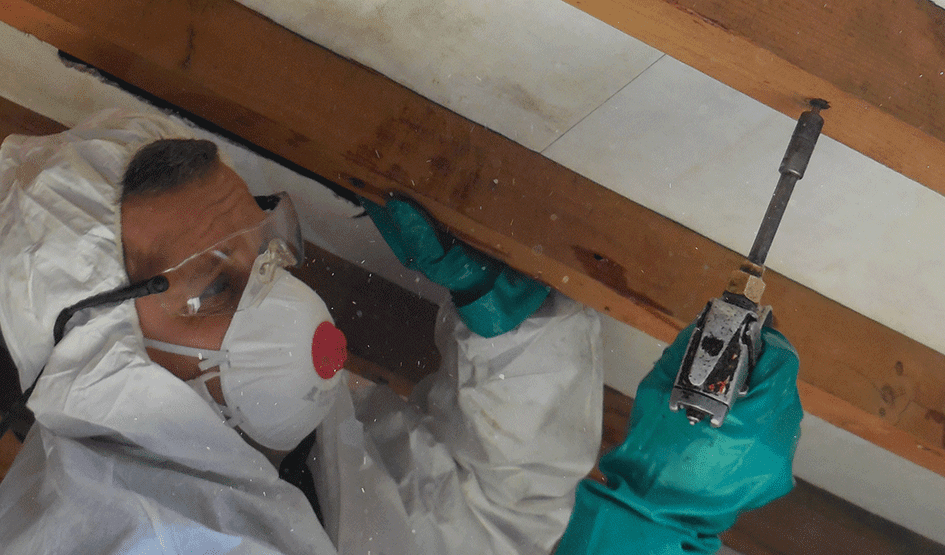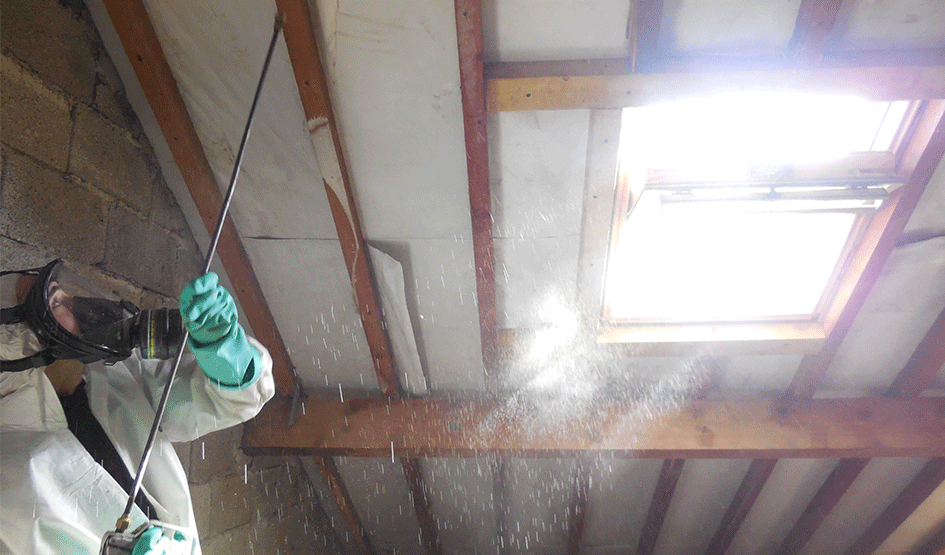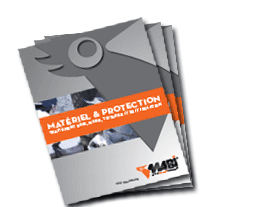Termites treatment
THE MABI INJECTION METHOD IS APPROVED
AND ADOPTED BY STATE ORGANIZATIONS IN MANY COUNTRIES.
IT IS APPLIED SUCCESSFULLY BY THOUSANDS OF
COMPANIES WORLDWIDE.
Follow these advices to know how to kill subterranean and drywood termites
Termite Information
What are termites?
From a queen and a king are born larvae which, after several moults, give sterile workers and soldiers, or nymphs, which will give sexual adults (able to reproduce).
The termites larvae undergo between 5 to 6 successive moults.
It is the worker termites who are solely responsible for the damage.
They eat cellulose and radiate foraging tunnels in the heart of the wood in search of food for trophallactic exchanges: they chew up wood and spit it back up to feed the rest of the colony.
Termites are a Wood Destroying Organism.
There are about 2700 species of termites but less than 200 can be considerated structural pests. Termites are found on all continents except Antarctica.
To perform a succesful termite treatment, you must identify the termite you are confronted with and adapt your termite control method.
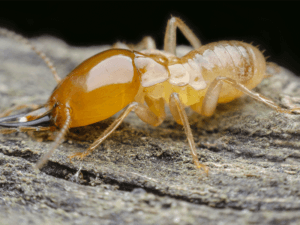
What species of termite are in Europe?
The Reticulitermes are subterranean termites, they live in contact with the ground or a source of moisture and are found in different parts of Europe, the 4 most common species being:
- Reticulitermes grassei in southwestern France, northwestern and southern Spain and Portugal
- Reticulitermes banyulensis in south of France and northest of Spain
- Reticulitermes flavipes (former santonensis) is found in western France
- Reticulitermes lucifugus in southest France and Italy
The Kalotermes are drywood termites with Kalotermes flavicolis, Kalotermes dispar and Cryptotermes brevis. In Europe Drywood termites make less damages in buildings than the subterranean termites. The termite control method differs depending on the specie.
How to identify a subterranean termite?
People often mistake termites for ants and call them “white ants”.
What does termite look like?
Flying ants (ant alate) and flying termites can look very similar. But looking closely, there are several differences:
– waist: ants have a narrow waist and termites a broad waist
– antennae: termites have straight or slightly curved antennae and ants elbowed antennae
– wings: ants have two pairs of wings of unequal size compared to the equal size of the termite’s wings
– color: both alates are black but no-alate termites are usually light in color.
Termite vs ants:
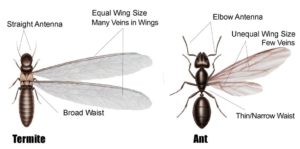
What damage subterranean termites cause?
The termite mound being located on the ground, you will first have to look for their presence in the wooden elements in contact with the floors or walls
A broken baseboard, a fragment of woodwork torn off following a shock, can reveal a completely hollowed out wood.
Tiny black holes, as big as a pinhead, on plaster ceilings and walls
Termite galleries are always empty of sawdust (unlike wood-boring beetles).
Termites dig the wood inside. Weakened wood does not maintain properly the structure of the building.
They can degrade any object made of wood and cellulose (furniture, books …)
Never neglect the presence of termites, their activity can cause the collapse of buildings if they are left deserted. It is strongly recommended to approach a professional expert.
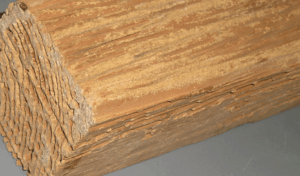
How to detect the presence of termites?
Because the termite mound is located on the ground, subterranean termites are difficult to spot. Mabi has developed a simple and effective solution! Use a monitoring station.
How does a termite detection station work?
Laying monitoring stations around a building allows the detection of Subterranean Termite activity, checking periodically the termite bait stations thanks to a removable plug.
In case of activity, an eradication method can be set up quickly.
The sharp and rigid form of the termite bait station has been specially designed for an easy and fast implementation into the soil.
The open areas facilitate access of termites to the timber bait placed inside.
Termites wall treatment
How to treat a subterranean termite infestation?
As they live underground, subterranean termites get into your home by the basement, slab and through the perimeter walls if not affected by a termite defense product at the entry points.
During the property survey, the applicator must check the level of infestation and the extent of the termite damages: evaluation of the strength of each wood part with the eventual replacement of certain parts.
Once the presence of termites is confirmed, a remedial action is required.
It is necessary to treat the perimeter walls, the wooden elements (door frames, window frames…) and the framing timber if affected, especially the end joist in contact with masonry.
These reliable termite MABI methods reduce time and labor, to cut treatment time and optimize your efficiency.
What you need to get rid of termites in masonries:
- Concrete drill bits
- Mabi injectors diameter 12, 14 or 18mm (injection packers)
- Mabi pump with an injection tip and a spray nozzle.
- Termiticide / Insecticide (Termidor or other Fipronil based biocide) to kill termites
- Personal Protective Equipment (PPE)
Perimeter wall termite treatment in 3 steps
Drill
Bore holes must be drilled depending on the diameter of the injector used (Ø12, 14 or 18mm) which is chosen in accordance with the structure’s condition: small diameter for dense masonry; bigger diameter for friable masonry.
Injection holes are drilled preferably on the outside of the building, following a horizontal line closest to the ground.
Injectors’ implementation
Injectors are inserted into each drilled hole, using a hammer and a mounting tool.
They have been developed to keep enough pressure during and after the injection of termite pesticide; to obtain an optimal diffusion of the termiticide into the thickness of the wall.
Injectors, also called injection packers allow an injection into the wall without backflow of chemical from the injected hole or the adjacent bore holes.
For thick walls, friable or with cavities, it is recommended to add, at the bottom of the injector, diffusing tubes with 360° micro holes to spread evenly the chemical in the full thickness of the wall.
Inject
The termiticide product is injected with low pressure thanks to an injection gun and the corresponding MABI pump
The pressure used has to allow a good termite pesticide penetration.
The Mabi injectors will force the insecticide liquid solution to spread inside the masonry with no leaks or splash back. All small cracks or voids will be filled with the termiticide to kill the termite colony.
For each injection, the injected product quantity should be controlled in order to respect the manufacturer’s chemical product instructions (termiticide quantity to be injected per linear meter).
Choose your pump depending on your needs here
Combine this approved method with a non-repellent termiticide / insecticide, for example Termidor, Taurus SC (a Fipronil alternative) or any other brand labelled for this pest in your country.
A non-repellent insecticide is undetectable to target pests, allowing them touch, ingest and spread the insecticide throughout the entire colony. The carrier termites transfer the insecticide with its molecule to other termites in the colony through social interaction.
Increase the number of treatment you can complete in a day with MABI injectors, a backflow-prevention plug. It is the environmentally responsible choice to keep your house termite free.
Termites wood treatment
How to treat subterranean and drywood termites in wood and framing timber?
What you need to get rid of termites in wood and timber:
- Wood drill bits
- Mabi injectors diameter 6.5 or 9.5mm (injection plug)
- Mabi pump with an injection tip and spray nozzle
- Termiticide / Insecticide to kill termites
- Personal Protective Equipment (PPE)
Structural wood treatment in 4 steps
Scrap
This stage’s aim is to see the extent of the damages and reach the sound wood.
It has to be done with a manual scraper. For painted woods, you have to use an abrasive disk.
Without doing this stage, sprayed termiticide products would stay on the wood’s exterior surface and not penetrate it.
Brush and drill
Then the scrapped parts have to be cleaned with a metallic brush to eliminate the dust.
Drill 3 to 5 holes per meter with a Wood Auger bit, in a horizontal line or in staggered
rows depending on the wood section. 2/3 of the beam thickness is the depth to respect.
For very large sections of wood (> 20/20 cm), the holes are made on the two opposite sides of the wood pieces.
Drill into the beam ends and joists to deliver chemical in the timber inside the mansonry.
Inject
The aim is to stop the termite progress into the timber and eliminate termites which cannot be reached by a surface treatment.
- Drive in the plastic injectors with a hammer.
• Inject the insecticide treatment product between 5 and 15 BAR until saturation by using a gun and an injection tip combined with a MABI pump
The Mabi injectors prevent chemical backflow to enhance the spreading of the termiticide inside timber and kill the termite colony.
Spray
Finally, adapt a spray nozzle to your gun to spray the wood preservative chemical over all wooden surfaces between 20 and 40 BAR.
You will destroy all termites surrounding and get lasting protection against future attacks of wood destroying organisms.
Combine this approved method with a termiticide / insecticide, for example Corpol (Quimunsa), Xilix 3000P (Adkalis) or any other brand labelled for this pest in your country.
Increase the efficiency of your termite treatments and your safety with MABI injectors, a backflow-prevention system. Save your property from destructive termites.
What is the cost of a remedial termite treatment?
Instead of a Do It Yourself termite treatment, MABI advises to ask a Pest Control Expert to help you kill your subterranean or drywood termites. Contact us if you want us to help you find exterminators and termite companies near you.
The methods are given for information purposes only.
Always refer to the local legislation and to the chemical manufacturer’s label before starting any job.
Always wear the Personal Protective Equipment (PPE) required and officially approved for chemical handling, including gloves, coverall, respirator and protective eyewear.
